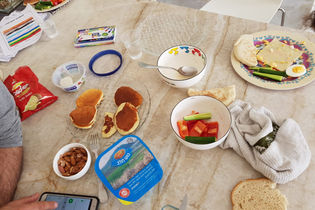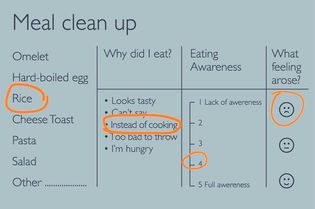A design study that examines eating habits of parents during meal preparation
Unconscious eating takes place while preparing the food and while clearing the table
Creating a dialogue between mindful eating and automatic eating
Focus group - parents of children aged 2-12, whose only common denominator is the routine around preparing meals for children
Eating and our relationship with food has always fascinated me - I have long since realized that it has nothing to do with hunger or basic needs. As with many others, I had questions about what I eat and when, and what drives my eating habits.
I wanted to explore this entangled physiological and psychological process that almost always involves feelings of guilt and failure. Investigating the subject through design processes posed a difficult challenge, and I thus used a technique called speculative design or critical design that offers an alternative to how things are in the present, and operates within the gap between familiar reality and vision.
In addition, I used a concept called co-design, which involves active participation of the participants, and during which both parents and children revealed their specific eating habits. This allowed me to characterize specific undesirable habits and to develop tools whose function is to consciously disrupt these habits, giving parents the ability to exaime more consciously.
Specially designed tools may disrupt automatic eating - various aspects
Quantitative aspect - dose control
Visual aspect - changing the context with the help of serving style
Ceremonial aspect - delaying the act of eating
Parents' attitudes toward their eating habits
A survey of 35 participants. February 2020
Active user research aimed at mapping common habits
Lack of awareness about the degree of control over eating habits
The general message conveyed by the participants was: "We're all in the same boat, we all snack while preparing meals for the children, no matter what we eat even if it's considered healthy, it bothers us that we have no control over it.
Mediation between the act of automatic eating and attentive eating
A formal and material search based on representative cases that emerged from the
study
Placing a mirror that reflects the act of eating
Habit analysis and customized tool development
A set of tools that will delay and disrupt the automatic eating operation
A kit sent to each of the study participants
Two configurations for each dish - edible and inedible
The edible tools have been popular among the parents
A tool to make a mini dish from the pot
A tool to snack vegetables while slicing
Cracker to wipping off leftovers from the spoon / knife

























